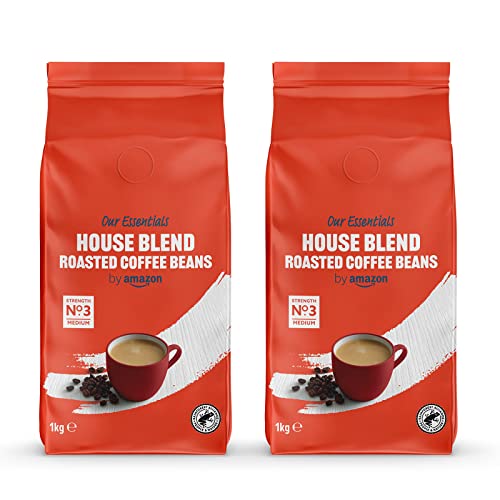Starbucks Coffee Beans 1kg
Starbucks was a cozy coffee shop situated in Seattle Washington prior to when it was famous for its Peppermint Mochas and red holiday cups. Its founders focused on selling whole bean coffee, but they didn't see the potential of espresso drinks.
Schultz changed everything. He was determined to demonstrate his roasting and mixing skills.
Origin
Starbucks coffee beans travel a long, winding journey before they reach your cup. The majority of the world's coffee is produced in the Coffee Belt, which stretches across the globe between Tropics of Cancer and Capricorn. The flavor of coffee beans is influenced by the climate, soil and the culture of the region. Starbucks sources its coffee beans from more than 30 countries.
The majority of Starbucks coffees come from three regions: Latin America, Africa and Asia-Pacific. These regions are known for their full-bodied flavor, balance of acidity and weight. Starbucks also sources coffee from St. Helena in the South Atlantic Ocean, a volcanic tropical paradise.
Starbucks coffee beans are roasted to perfection to give an incredibly smooth and delicious taste. The coffee beans are crushed into a fine powder and ready to be brewed. The powder is then mixed with water, and then poured into a cup, creating an exquisite cup of espresso. The result is a cup of espresso that is full of flavor and energy.
While the majority of Starbucks coffees are blends of different beans, there are numerous kinds of single-origin varieties available at the chain's stores. The single-origin coffees offered by Starbucks come with a wide range of flavors that include nutty and sweet and fruity, as well as chocolatey. Some single-origin coffees are even certified organic.
Starbucks's coffee is sourced from all over the world however, they must meet certain requirements to be considered special. The term "specialty coffee" was first used in the late 1980s, when roasters and cafes started experimenting with lighter roasting, manual methods, and transparent source. Starbucks did not begin making its coffee purchases with these standards in mind but has since adopted a few of them.
pure coffee beans is also working to improve the quality of life for those who cultivate its coffee. It pays its farmers a premium above market prices and helps them invest in their communities. It also promotes sustainability and works to reduce wastage. This has led to the creation of new practices for coffee cultivation and techniques that safeguard the environment.

Roast
Starbucks roasts beans in large quantities and buys beans in large quantities. The process of roasting takes from 10 to 15 minutes. The end result is that the beans are dark roast. Dark roasted beans have an intense flavor and a full body. The beans are ground up and then sent to stores and supermarkets in the form of coffee grind. Most of the time, this ground coffee is not ideal for making the perfect cup of coffee since it is already bitter. This is why most people add lots of sugar, cream flavorings, milk, whipping cream and more to their cup of joe. This won't mask the bitterness in the coffee, but it can make the drink more appealing.
When the beans are first dropped into the roaster, they begin to steam due their internal moisture. Then comes the "first crack", an audible sound that tells us when the roasting process has actually begun. At this point the sugars begin to caramelize and water that has been encased begins to escape. In the same time the bean's structure is broken down and oils begin to flow outwards from their tiny pockets. At the end of this phase the majority of coffees are considered to be city roasts.
The roasted beans are then cool and then separated from any stones or other impurities that may have escaped the roaster. They are then examined by hand prior to being packaged and sold. Some beans have a dark spot that is called"quaker. The beans didn't change color and tasted burned. This is a common phenomenon, but it does not necessarily mean that the coffee is bad.
The beans are typically cooked in small quantities Sometimes as little as 20 pounds. These are called "micro-lots". This is because each coffee will be roasted according to specifications developed by a Starbucks team of masters of coffee. The team of coffee experts creates distinctive profiles that are utilized by all Starbucks(r) roasting facilities across the globe. These profiles ensure that each cup of coffee produced will be consistent, and has the same amount of body and flavor.
Flavor
Starbucks buys their coffee from the farm they come from to improve the quality of their beans and ensure an ethical source. They also plant an entire coffee plant for every kilogram of beans sold. The beans aren't labeled by their origin, but some blends are. Veranda is from Sumatra; Komodo Dragon is from Indonesian; and Anniversary is a blend of centeral american and African beans. The beans possess a distinct flavor profile and produce an elegant cup that has a delicate blend of sweetness and smoothness. Each sip reveals a variety of flavours that leave a long, delicious taste on your tongue.
Weight
The weight of Starbucks beans 1kg is contingent on the blend. A Starbucks House Blend, for instance, weighs 14 oz per pound. Walmart's pound of Espresso Roast beans weighs 16 oz. This translates to a 67% cost increase at Starbucks in comparison to Wal-Mart.
Starbucks' Pike Place Roast is named for the iconic Seattle market. The light-medium roasting brings sweetness, balance and a silky smoothness to every cup. This blend, which is made from beans from Latin America is perfect for Americano or espresso. This premium blend comes in a FlavorLock package to preserve and protect the flavor. This is Starbucks' signature coffee. This is a fantastic choice for those who love coffee! Made with 100% Arabica beans. This is a great gift for Starbucks lovers.
